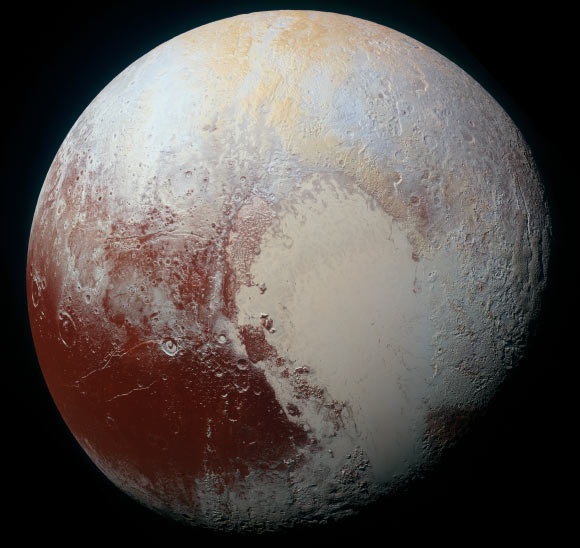
Life is tough for dwarf planet Pluto. After being stripped of its status an a planet in 2006 for its small size, it may be facing an upcoming atmospheric armageddon.
Astronomers have been studying the seasonal changes to Pluto’s surface pressure using a technique called ground-based stellar occultations. An occultation occurs when an object like a moon or planet blocks the light coming to Earth from a more distant object like a star, like a solar eclipse. By observing how Pluto blocks the light from distant stars, information about the atmosphere’s density, pressure, and temperature can be measured.
“We were able to construct seasonal models of Pluto and how it responds to changes with the amount of sunlight it receives as it orbits the Sun,” Andrew Cole of the University of Tasmania said in a statement. “What we found was when Pluto is farthest away from the Sun, and during its winter in the northern hemisphere, nitrogen freezes out of the atmosphere.”
It is already pretty chilly on the surface of Pluto, with a surface temperature that varies between minus 378 and minus 396 degrees Fahrenheit (minus 228 to minus 238 degrees Celsius). Now we know that some seasons are colder than others — cold enough for nitrogen, which makes up the majority of the atmosphere — to freeze.
And the atmosphere is changing over time as well. Atmospheric pressure has increased by three times over the last thirty years. Models of the dwarf planet show that the majority of the atmosphere will condense outwards until almost nothing remains. “What our predictions show is that by 2030 the atmosphere is going to frost out and vanish around the whole planet,” Cole said.
If this happens, it will change the way that Pluto appears to us. The nitrogen freezing would reflect more sunlight, so Pluto would actually appear brighter in the sky. But the terrain of the dwarf planet will look different too. The colors observed by the New Horizons mission to Pluto in 2015, like the bright red terrain shown in the image above, may be hidden beneath nitrogen frost.
The findings will soon be published in the journal Astronomy & Astrophysics, and you can see the paper on the pre-publication archive arXiv.



